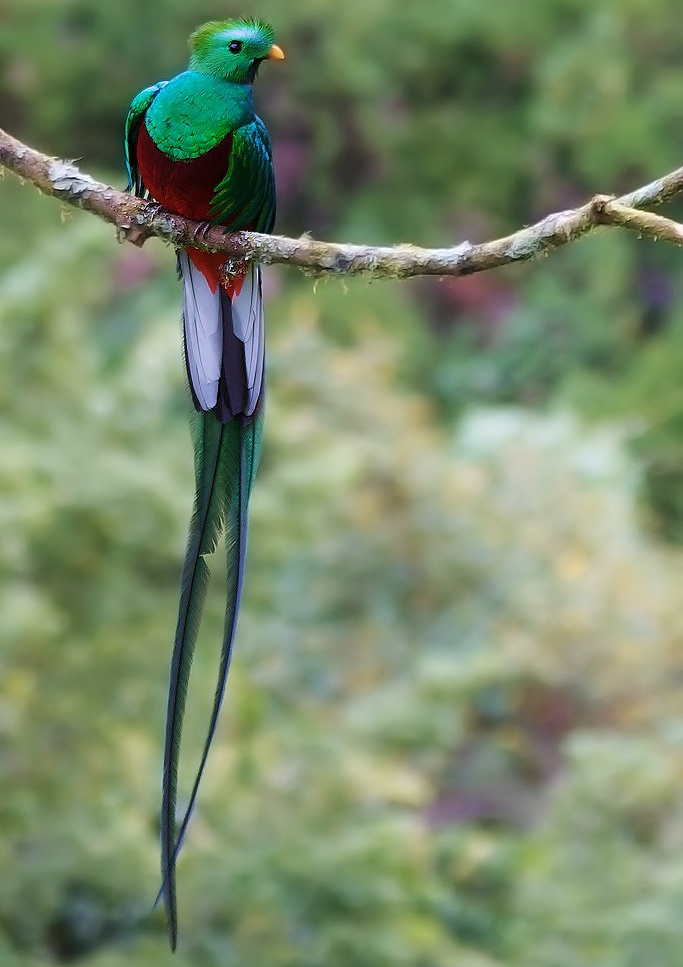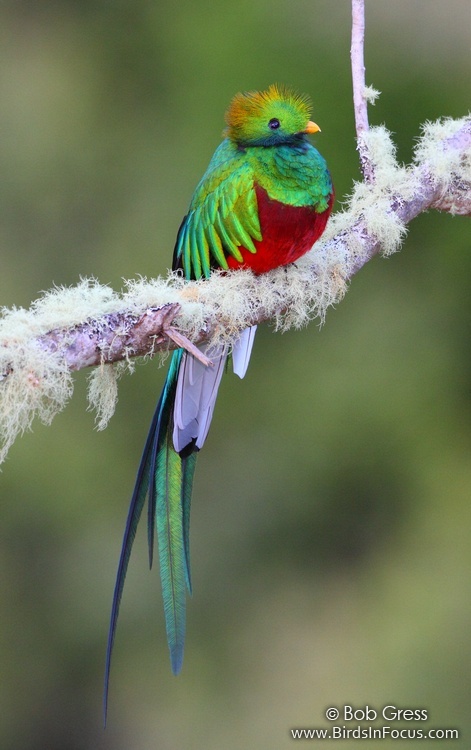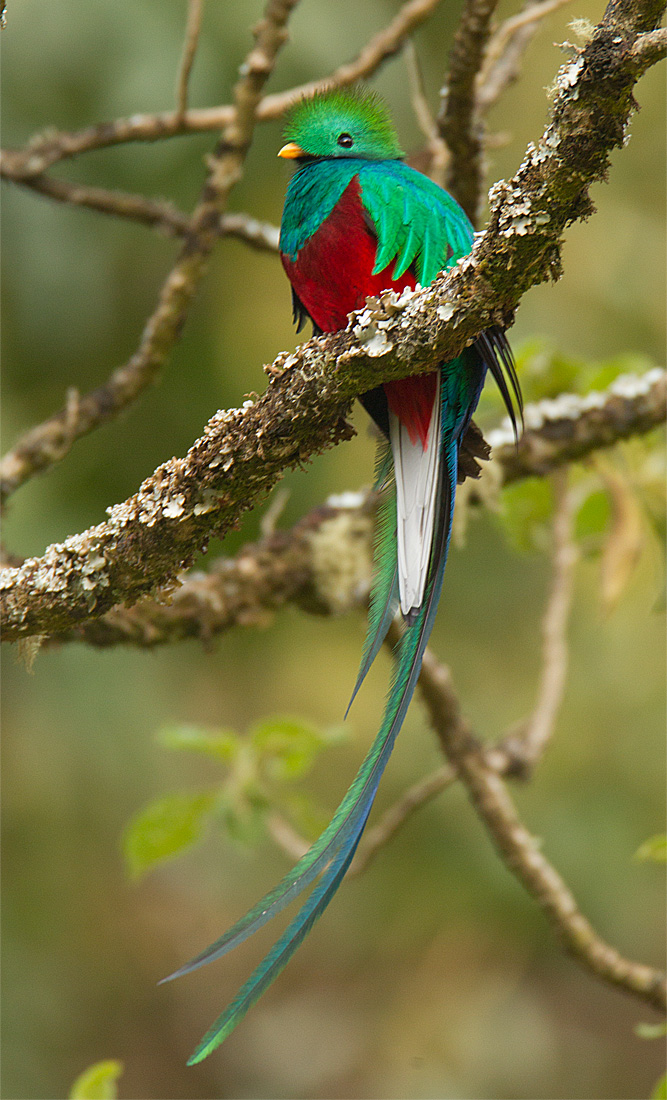
Pharomachrus mocinno
SUBFAMILY
Trogoninae
TAXONOMY
Pharomachrus mocinno de la Lave, 1832, Guatemala and Chiapas.
Two subspecies.
OTHER COMMON NAMES
English: Coasta Rican quetzal, northern quetzal, magnificent
quetzal; French: Quetzal resplendissant; German:
Quetzal; Spanish: Quetzal Guatemalteco, Quetzal Centroamericano.
PHYSICAL CHARACTERISTICS
14.2–15.7 in (36–40 cm), with 25.6–in (65 cm) tail-streamers,
6.2–7.3 oz (180–210 g). Head, chest upperparts, and elongate
greater coverts brilliant gold-green iridescing to bluish, flight
feathers blackish, lower breast and undertail-coverts red,
undertail white, yellow bill. Filamentous feathers give head
bristling appearance.
DISTRIBUTION
Discontinuous through Central America, from southern Mexico
to western Panama.
HABITAT
Cloud forests, forest edges.
BEHAVIOR
Territorial. Males engage in flight displays during breeding
season.
FEEDING ECOLOGY AND DIET
Sally-gleans fruit, insects, small reptiles and amphibians. Primarily
frugivorous.
REPRODUCTIVE BIOLOGY
Breeds March through June over range; nests in deep cavity in
decaying tree stumps often high above ground; lays one to two
eggs, incubates 17–19 days, fledges in 23–31 days. High chick
mortality.
CONSERVATION STATUS
IUCN Near Threatened species. Threatened locally by poaching
and habitat disturbance.
SIGNIFICANCE TO HUMANS
Revered by Maya and Aztecs of Central America; plumes used
for decoration well into the twentieth century; very popular
birdwatching target.
Other popular Animals
Photo Gallery of - Resplendent quetzal




 Animalia Life
Animalia Life